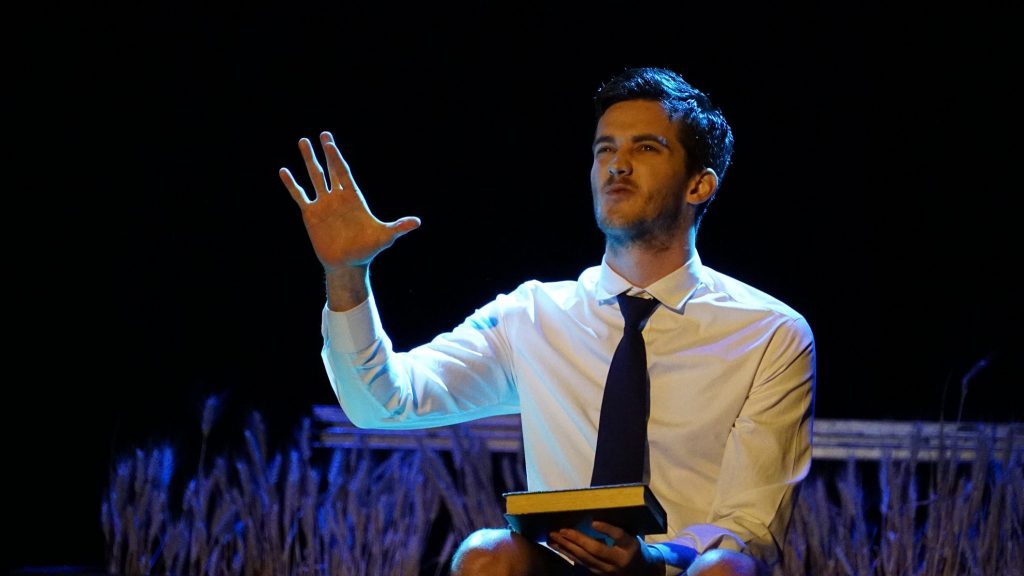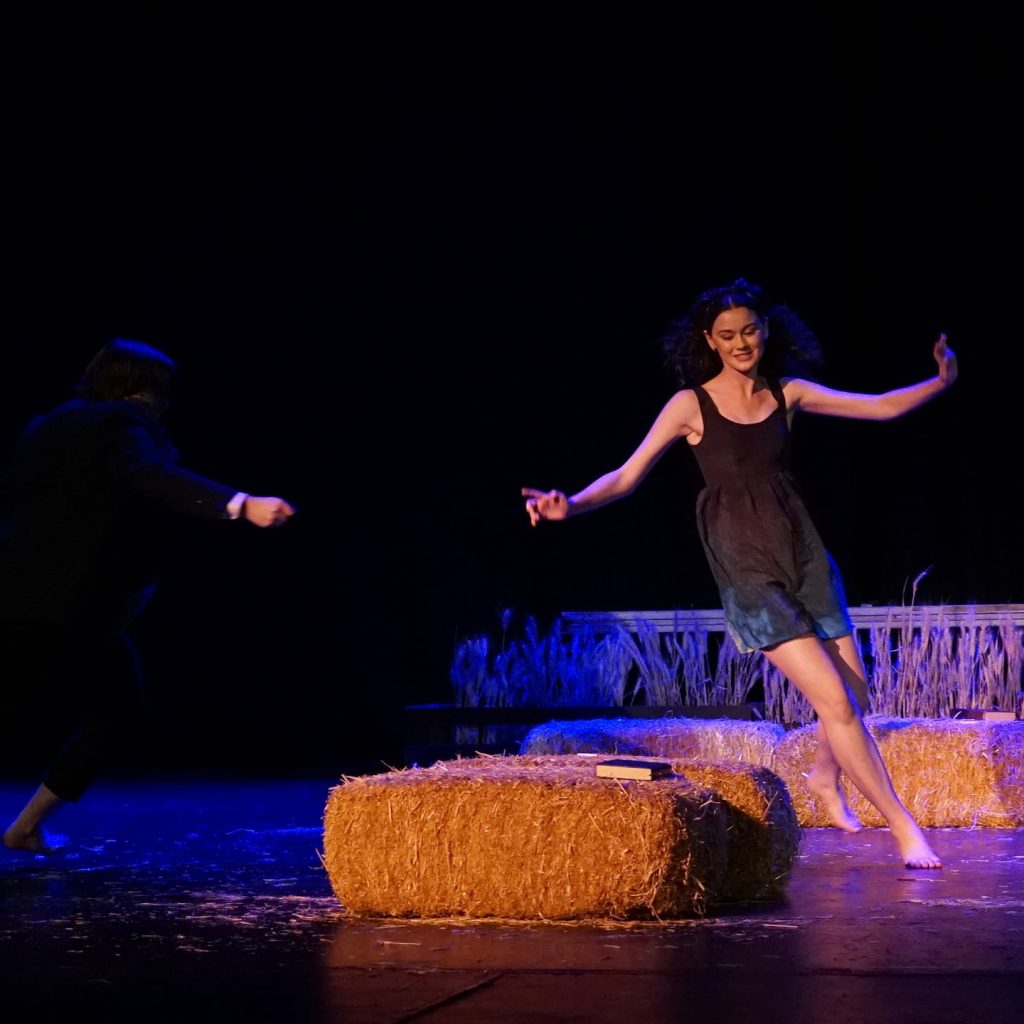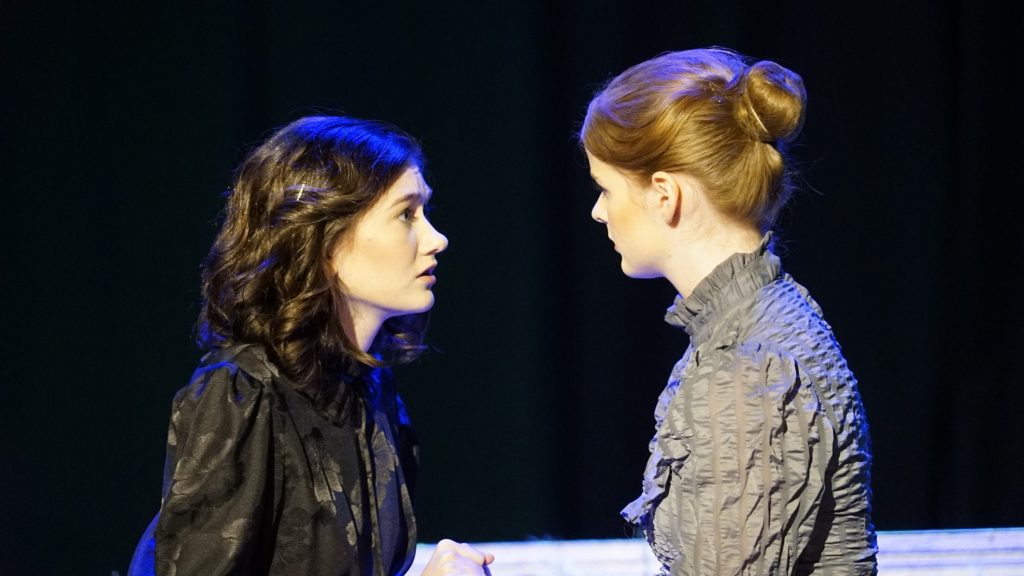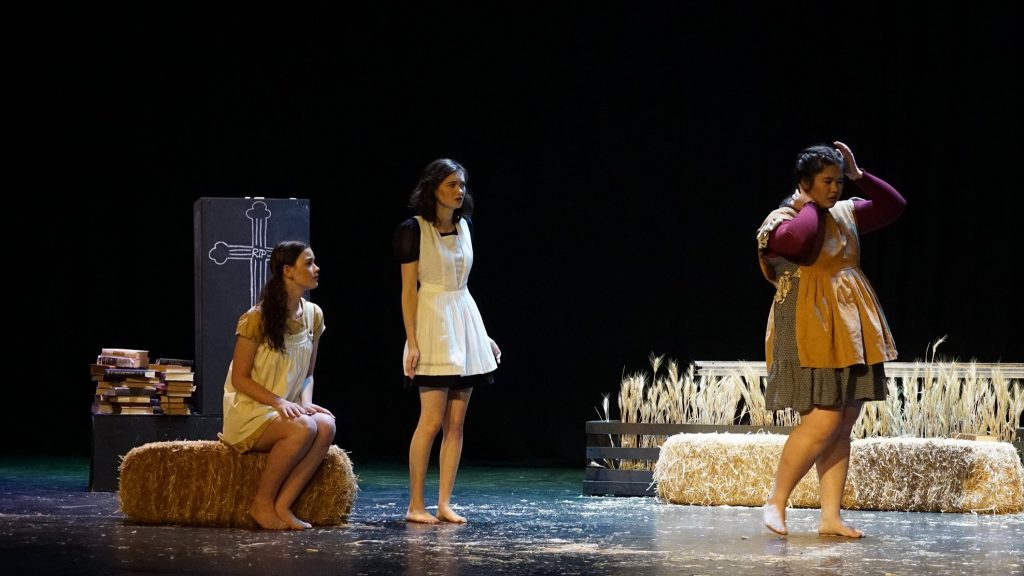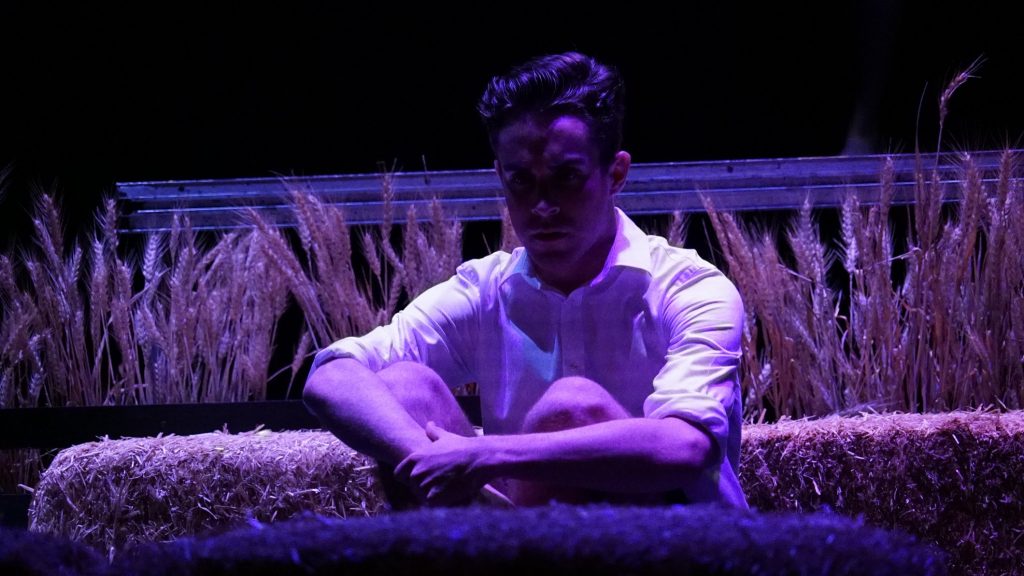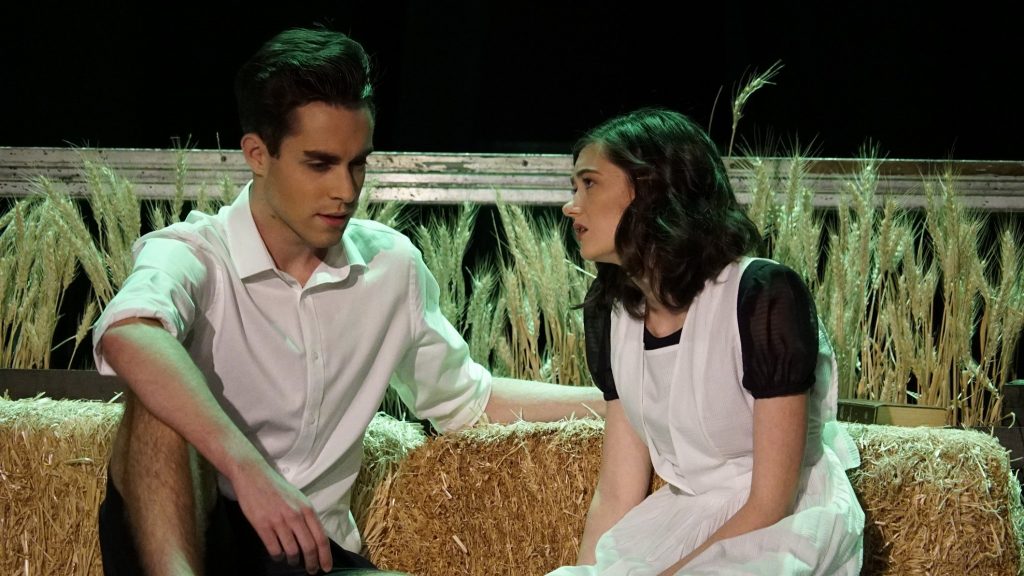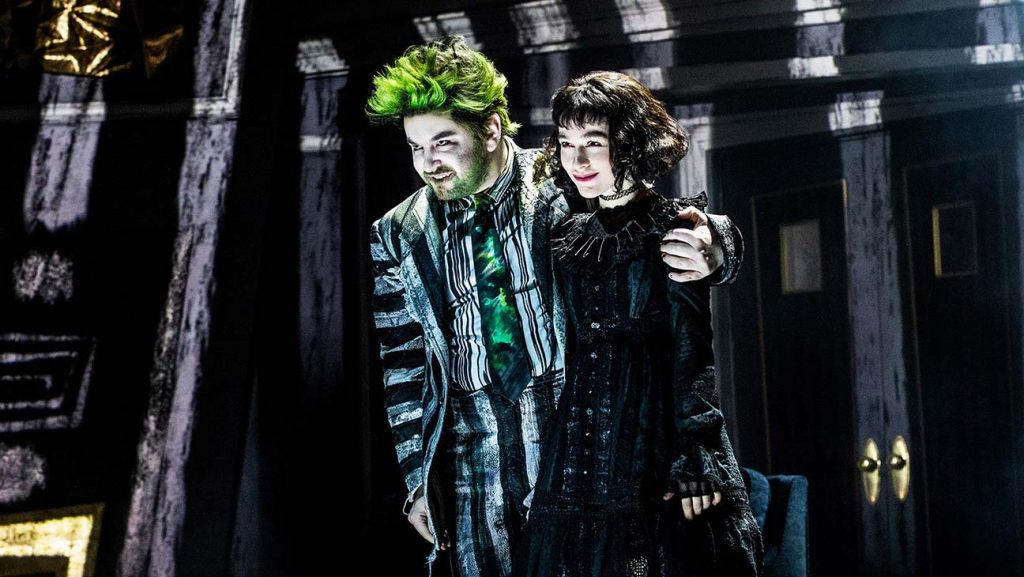
‘Spring Awakening’ // Underground Productions
‘Spring Awakening’ was indulgent
Underground Productions latest show brings back to the stage the classic play ‘Spring Awakening’, not the musical, the German play. A bold and challenging choice for a university theatre group and the young cast and production team did well to bring it to the stage.
‘Spring Awakening’ is set in Germany in the 1800s and tells the story of three fourteen-year-olds and their paths of self-discovery. Over the course of the play the three slowly learn that the world isn’t as perfect as they thought it was, there is darkness all around, and sometimes within. A warning; this play covers mature themes such as rape, abortion, suicide and domestic violence.
Director Kurtis Laing has done well overall with this production, most notably in his direction of the transitions between the scenes. Slightly rooted in physical theatre and a more surrealistic plane, the cast was responsible for moving the set in the transitions, however, they did this with a clear purpose and this allowed it to add meaning to the production.
Perhaps it was due to the effectiveness of the transitions or the complexity and wordiness of the script, but the staging within the physical scenes was very simple. The play consists of a lot of monologues and duologues and apart from a few exceptions (Moritz and Ilse’s slow dancing reunion) most of the scenes simply had the cast standing or sitting centre stage. This is a common problem when working on a stage the size of the Schonell, which can feel cavernous and regularly impacts staging and lighting.
The set surrounding the scenes, however, was very clever. It was very adaptable and was used throughout the production to highlight the themes and messages within the play. The most obvious was the reinforcing of the stress on the students in the schooling system, a big focal point of the play. On either side of the stage black boxes covered with blackboard paint were used as chalkboards, and in act two as gravestones.
The central part of the set consisted of a rostrum hidden behind hay and four hay bales. These were used as the main set pieces and, in a crafty minimalistic way, managed to take the audience to the many different settings of the play.
Lighting and costumes were also well used throughout the production. Simple costumes allowed the cast, particularly the ensemble, to play multiple roles with the small addition of a scarf or coat. The lighting design during the transitions enhanced their surrealistic style and, despite there being some lacking face light during the scenes, at key moments it truly enhanced the play. Most notable were the pure white lights used to underscore the gunshot and highlight the graves.
The biggest hindrance to staging a production like ‘Spring Awakening’ is the sheer size of the script. Not to mention the depth, and number, of themes that are dealt with throughout, which can seem prolific. While the musical is an adaptation, it is based on a German novel of the same name, and the script holds onto a lot of the Germanic stylisations, especially the rambling, repetitive narratives that feature throughout.
The characters themselves go on enormous growth arcs and spend a lot of time looking introspectively. This necessary development can be difficult for even the most experienced production team to handle, and in this case, the show has moments of feeling underprepared and rushed.
Complexities of the script aside, the actors and creatives did an excellent job of bringing the production to life. The ensemble worked cohesively throughout, never missing a cue, and played multiple characters convincingly.
A particularly notable scene was the opening to act two, where the male ensemble played the board of the school the students attend. With clever direction, the actors perform this scene in a very surrealistic, over the top way, which contrasts to the darker naturalism used when portraying the children. This highlights the sheer stupidity of the system, bringing forth one of the strong themes of the play.
One of the stand out performances of the night was from one of the ensemble members, Drew Buchanan as Hans. His monologue in act one, though lengthy and perhaps tangential from the plot, was engaging to watch. He truly took the time to explore the character and his emotions, playing so smoothly between the emotional highs and lows. It was captivating to watch.
Benjamin Barruel as Melchior Gabor and Hannah Boyd as Wendla Bergmann are to be commended for their portrayals of the two main characters. They brought a soft, in some ways twisted, naivety to the characters, that was disturbing to behold.
Moritz Stiefel is a role that requires such a vast range of emotion, and an intrinsic maturity, which Lachlan Hoy has in spades. If anything he should be congratulated simply for the number of lines he had to learn, but more so for the way he made the rambling lines of the script a part of his character. Hoy has created a very endearing, if a little naïve, character that allows the audience to empathise with him until the very end.
Overall Spring Awakening was a solid production, the whole cast and crew should be congratulated for their ability to tackle such a dense, complicated script. While ‘Spring Awakening’ ran until the 18th of May there is plenty left in the Underground Productions season for 2019. For more information and to book tickets, go to http://www.undergroundproductions.org.au.




